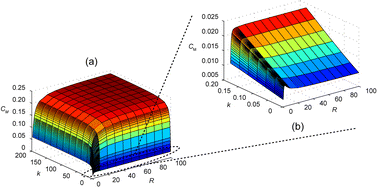A simple and efficient approach for calculating permeability coefficients and HETP for rectangular columns
Abstract
There had been little progress in development of the theoretical basis of rectangular chromatography columns until Spangler made great progress by using a more exact model than Golay's. Unfortunately, there was a deficiency in his calculations, which led to a conclusion inconsistent with the previous theories. In this paper, a simpler formula with defined variables was first established to calculate the mean permeability coefficient for a rectangular GC column. A formula was also established to calculate the height equivalent to a theoretical plate (HETP) for a rectangular column based on this work and the correction of Spangler's theory. By comparing both our predictions and Spangler's predictions with Golay's, respectively, we could demonstrate that our theory is more exact. Further, one parameter (A) was found to be not monotonous. This finding leads to the conclusion that the square column has the highest performance among all the rectangular-shaped columns used for


 Please wait while we load your content...
Please wait while we load your content...